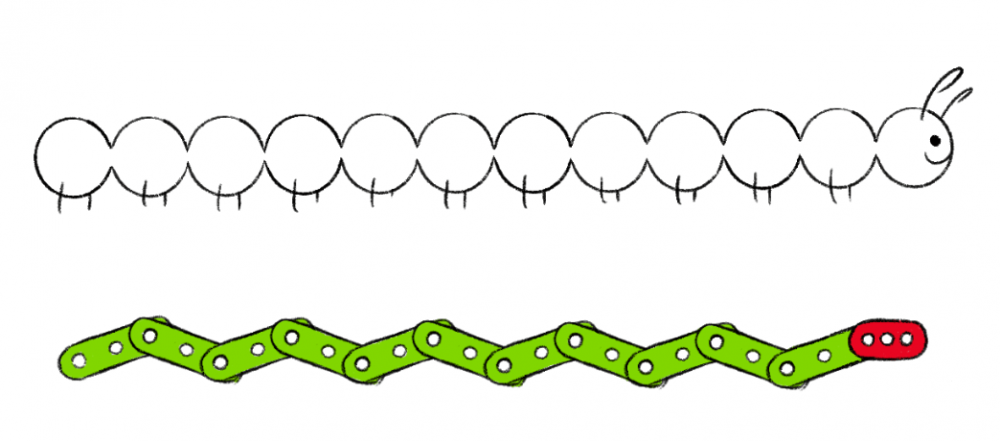Engage
Launch the Engage Section
ACTS is what the teacher will do and ASKS is how the teacher will facilitate.
| ACTS | ASKS |
|---|---|
|
|
Getting the Students Ready to Build
If we are going to add more to our habitat, what are some things we should consider to make our work successful?
Suggestions could include:
- making the model small enough to fit the space
- not making it overly complicated
- drawing/sketching a design plan before building
- thinking about how and where it will attach to the existing habitat, etc
Facilitate the Build
-
InstructInstruct
students to join their groups and fill out the Robotics Roles & Routines sheet. students that together, they are going to construct the frog habitat.
Instruct students that in their groups, they are going to construct the animal or insect they’ve just chosen, using the VEX Go kit materials and classroom maker materials.

Design and Animal or Insect - Students will work in their teams to create model of another creature, and will attach it to the existing habitat with the teacher’s help.
- The habitat will be continue used as a staging space for the rest of the Unit, so there should still be space to include the frog models.
- Each group should take a few minutes to sketch out the organism they are working on, as a drawing and in kit pieces or materials that could be used.
- DistributeDistribute kit materials, pencils, and paper to each group, and review what classroom craft materials are available.
-
FacilitateFacilitate
building process, and ask questions as you help groups put their pieces together.
- Which VEX GO parts are you using? Why did you choose those?
- How are you planning to attach it to the habitat?
- Describe how you’re going to build your animal for me.
- OfferOffer suggestions and note positive team building and problem solving strategies as teams build together.

Teacher Troubleshooting
- Pre-plan and Pre-build - You may want to model the design and free building process for your students in the Engage portion. You can choose an animal, sketch out what the animal looks like on the board, then break down that sketch into shapes and pieces. Demonstrate the planning portion to your students, and show a model that you’ve built already (that matches your plan) to show how the designing and building can work together.
- Student Help Desk - If you have certain students who seem to complete the build portion of labs quickly and successfully, assign them to be your “Help Desk” for a portion of the lab. Encourage other students to use the “Help Desk”, and for those working there to practice explaining their strategies and connections to others. (Note - the Help Desk is for another perspective, not to be building things for your friends.)
Facilitation Strategies
- Sketch your Habitat: If students do not have access to a device or camera, they can just as easily sketch their habitats in the Field Journal pages.
- Have Students Choose Perspective for their Field Journal pages:
- Frog’s perspective: What can the frog do now that it couldn’t do before? What is the froglet looking forward to about growing up? How can the frog interact with its environment in new and exciting ways? What is the adult frog still afraid of?
- Scientist’s perspective: What did you notice about the way the frog’s legs changed? How do they move? What is unique about the legs and feet from froglet to frog? How can the froglet interact with its environment differently than the tadpole? What similarities do you see across phases in the life cycle?
- Use the Get Ready...Get VEX...GO! PDF Book and Teacher’s Guide - If students are new to VEX GO, read the PDF book and use the prompts in the Teacher’s Guide (Google / .pptx / .pdf) to facilitate an introduction to building and using VEX GO before beginning the Lab activities. Students can join their groups and gather their VEX GO Kits, and follow along with the building activity within the book as you read.
- Use the Teacher’s Guide to facilitate student engagement. To focus on VEX GO connections in a more concrete or tangible way, use the Share, Show, or Find prompts on each page to give students an opportunity to get to know their kits in more depth.
- To focus on the habits of mind that support building and learning with VEX GO, like persistence, patience, and teamwork, use the Think prompts on each page to engage students in conversations about mindset and strategies to support successful group work and creative thinking.
- To learn more about using the PDF book and accompanying Teacher’s Guide as a teaching tool any time you are using VEX GO in your classroom, see this VEX Library article.